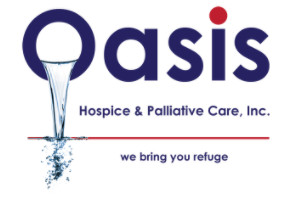When facing a serious illness, understanding your care options is essential. Not just for the patient, but for the entire family. Two common types of care that often come up are palliative care and hospice care. While they share a similar goal of improving quality of life and providing comfort, there are key differences in when they are offered, who they serve, and what services they include.
In this article, we will explore what palliative care is, what hospice is, and how they differ from one another. We will also look at some common misconceptions about what is palliative care vs hospice.

Overview Of Palliative Care
Palliative care is a medical specialty focused on providing relief from the symptoms, pain, and stress of serious illness. It is designed to improve quality of life for both the patient and their family by addressing physical, emotional, social, and spiritual needs. Palliative care can be provided along with curative treatments and can begin at any stage of a serious illness.
Palliative care teams are made up of an interdisciplinary group of healthcare professionals including doctors, nurses, social workers, chaplains, and other specialists. These professionals work together to provide comprehensive care tailored to each patient’s specific needs. They coordinate with the patient’s primary doctor to ensure that the patient receives all necessary treatments while minimizing discomfort and suffering.
Palliative care is not the same as hospice, although they may overlap in some cases. Whereas palliative care can start at any stage of a serious illness – even before diagnosis – hospice is typically reserved for patients who have elected to forgo curative treatments or those who are no longer responding to them.
Overview Of Hospice Care
Hospice care is dedicated to providing comfort and compassion to those facing a terminal illness or condition. It offers a holistic approach that addresses the emotional, physical, and spiritual needs of the patient and their family. Hospice teams are made up of physicians, nurses, social workers, chaplains, therapists and other professionals who specialize in end-of-life care.
The focus of hospice care is to provide comfort and quality of life for patients in their last days or weeks. Treatment plans are tailored to the individual’s preferences and address all aspects of physical health as well as emotional and spiritual support.
Hospice services also extend to caregivers and family members who may be struggling with grief or other emotions associated with the patient’s illness or death.
Hospice care is provided in a variety of settings including hospitals, nursing homes, the patient’s home or hospice facilities. Patients may receive palliative treatments such as pain management while receiving hospice services.

Key Differences Between Palliative And Hospice Care
The primary difference between palliative care and hospice care lies in the timing of when each is offered. Palliative care can begin at any stage during a serious or terminal illness, while hospice is typically offered when any treatments used to cure the patient are no longer effective.
Additionally, while both involve helping patients deal with pain associated with their disease or condition, palliative care focuses on treating the symptom rather than curing the underlying cause, whereas hospice aims to control symptoms without curative treatment.
With this knowledge about the differences between palliative and hospice care, we can now turn our attention to discussing the benefits of palliative care.
Benefits Of Palliative Care Services Chicago, IL.
Palliative care is a specialized type of medical care that focuses on providing patients with relief from pain and other symptoms caused by serious illnesses. It is often provided in addition to treatment that is intended to cure the underlying condition.
Benefits of Palliative Care
- Symptom management that allows patients to continue treatments meant to cure underlying conditions.
- Emotional and spiritual support for both the patient and their family members.
- Help making informed decisions about potential medical treatments.
Benefits of Hospice Care:
- Comfort measures such as medication for pain relief, physical contact, and music therapy.
- Spiritual guidance from chaplains or religious leaders if desired by the patient or family members.
- Social work services meant to aid in understanding end-of-life options.
Frequently Asked Questions
What Types Of Illnesses Can Benefit From Palliative Or Hospice Care?
Palliative and hospice care can benefit people with any serious or terminal illness, including cancer, heart disease, COPD, dementia and other neurological conditions.
Both palliative and hospice care focus on providing comfort and symptom relief.
The main difference between the two is that palliative care can begin at any stage of an illness while hospice is usually reserved for those who have a life expectancy of six months or less.
Is Palliative Or Hospice Care Only Used When A Person Is Nearing The End Of Life?
No, palliative or hospice care is not only used when a person is nearing the end of life.
People of any age with any serious illness can benefit from these services, which work to make a patient more comfortable and improve their quality of life.
Palliative care focuses on symptom relief and making sure an individual’s physical, emotional, and spiritual needs are met.
Hospice care takes this one step further by providing end-of-life care for those who have a terminal illness and aren’t expected to live longer than six months.
Are There Any Limitations On How Long A Patient Can Receive Palliative Or Hospice Care?
The journey of life is a winding road and, at times, the path may be difficult to navigate. For those facing a terminal illness, palliative and hospice care offer comfort and support for both the patient and their loved ones. But many wonder if there are any limitations on how long a person can receive this care.
The short answer is no; palliative and hospice care can be provided for as long as it’s needed, regardless of how much time is left in life’s journey.
Are There Any Costs Associated With Palliative Or Hospice Care?
Palliative care and hospice care are both covered by Medicare, Medicaid and private insurance, so there are generally no out-of-pocket costs. However, depending on the patient’s insurance plan, there may be co-pays for medications or other services. Additionally, if a patient chooses to receive palliative or hospice care from an in-home provider, they may need to pay any remaining costs not covered by their insurance plan.
How Can Family Members Be Involved In Palliative Or Hospice Care?
Family members can be actively involved in palliative or hospice care by providing emotional and physical support to the patient. They can help with daily tasks such as bathing, preparing meals, and dressing the patient, as well as providing companionship. It’s important for family members to make sure that their loved one is comfortable and taken care of.
Family members can also provide respite care for the primary caregiver, which is a break from their duties. It’s also helpful for family members to join any meetings with the patient’s healthcare team in order to have all necessary information about their loved one’s condition.
In-Home Hospice and Palliative Care in Chicago, IL
At Oasis Hospice Care, we’re honored to be a trusted source of comfort, compassion, and expert care for families across Chicago, Illinois. Whether you need in-home hospice care focused on end-of-life support or palliative care to manage serious illness, our dedicated team in Dolton, IL is here to walk with you every step of the way.
We bring peace, dignity, and personalized attention right to your doorstep, ensuring your loved one receives the care they deserve in the place they feel most at home. Call us today at 708-564-4838 to learn how we can support you and your family.

